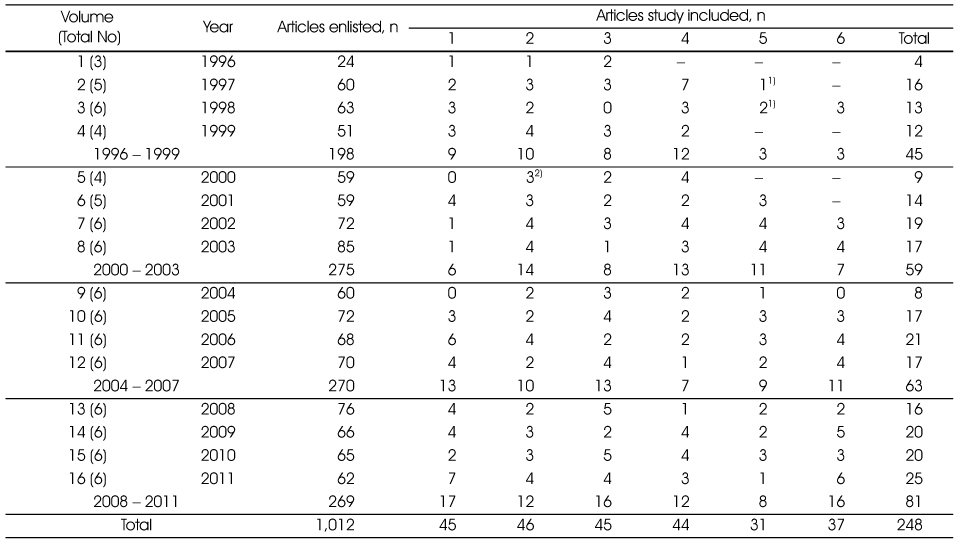References
1. Ahn Y, Bae J, Youn JE, Kim HS. Needs assessment for web-based self-management program by the nutrition knowledgelevels of diabetic patients. Korean J Community Nutr 2011;16(1):155–168.
2. Cha BK. A study of nutrient intake states and the prevalence of obesity in buddist nuns. Korean J Community Nutr 2001;6(2):227–233.
3. Chung HK, Kang JH, Shin MJ. Assessment for nutrient intakes in Korean women according to obesity and metabolic syndrome. Korean J Community Nutr 2010;15(5):694–703.
4. Daum Language Dictionary. Obesity 2013. cited 2013 April 10. Available from
http://dic.daum.net.
5. Kang JH, Ryu HK. A study of the sustainability of NutriPlus program effect -in Pohang area-. Korean J Community Nutr 2011;16(2):206–214.
6. Kim JY, Han YS, Bae HS, Ahn HS. Dietary intakes and serum lipids and iron indices on obese children. Korean J Community Nutr 2006;11(5):575–586.
7. Kim K, Son SM, Kim HK. Dietary and lifestyle factors associated with hypertension in Korean adolescents -Based on 2005 Korean national nealth and nutrition examination survey-. Korean J Community Nutr 2011a;16(4):439–453.
8. Kim MS, Choi MS, Kim KN. Effect of nutrition education and exercise intervention on physical and dietary patterns of some obese children. Korean J Community Nutr 2011b;16(4):426–438.
9. Korea Centers for Disease Control and Prevention, The Korean Pediatrics Society. Korean national growth charts 2008.
11. Korean Society for the Study of Obesity. Fact Sheer of Korean Society for the Study of Obesity 2010. cited 2013 August 12. Available from
http://www.kosso.or.kr.
12. Kukminilbo. Opinion an editorial article (2010.03.30) 2010. cited 2013 April 16. Available from
http://www.kinds.or.kr/.
13. Kyung Hee University Medical Hospital. Kyung Hee health information 2013. cited 2013 July 16. Available from
http://www.khmc.or.kr/.
14. Lee HS, Kim BE, Cho MS, Kim WY. A study on nutrient intake, anthropometric data and serum profiles among high school students residing in Seoul. Korean J Community Nutr 2004;9(5):589–596.
15. Lee JH, Kim C. Effect of mothers' weaning attitudes on their children's food habits and development. Korean J Community Nutr 2006;11(5):551–561.
16. Lee JS. A comparative study on the dietary attitudes and nutritional status of preschool children in different income levels in Busan. Korean J Community Nutr 2006;11(2):161–171.
17. Lee JW, Lee MS, Kim JH, Son SM, Lee BS. Nutritional assessment Revisedth ed. Paju: Kyomunsa; 2008. p. 117–122.
18. Lee YM, Kim JH. Nutritional assessment Seoul: Hyoilmunhwasa; 1998. p. 143–153.
19. McArdle WD, Katch FI, Katch VL. Exercise physiology Philadelphia: Lea & Febiger; 1981. p. 368–370.
21. Ministry of Health and Welfare, Korea Centers for Disease Control and Prevention. 2007 Korean Health Statistics. National Health and Nutrition Survey 4th period 1st year 2007 2008. p. 56.
22. Mo SM. Diet therapy Paju: Kyomunsa; 1992. p. 240–250.
24. Park YS, Chun HJ, Song BK. Determining obesity frequency of rural children by skinfold thickness, analyzing their KAP related to obesity and obesity camp strategy. Korean J Community Nutr 2000;5(3):502–512.
25. Kim Rim JC, Kang SA, Wee H. The associations of percent body fat with dietary intakes, plasma lipids, lipoprotein(a), and PAI-I in middle aged Korean adults. Korean J Community Nutr 1998;3(5):695–706.
26. Sin EK, Lee YK. Health status by anthropometric values and serum biochemical indices of preschool children in day-care centers in Gumi. Korean J Community Nutr 2005;10(3):253–263.
27. Son SM, Park YJ, Koo J, Mo S, Yoon YY, Sung CJ. Nutritional and health status of Korean elderly from low income, urban area and improving effect of meal service on nutritional and health status - I. Anthropometric measurements and nutrient intakes -. Korean J Community Nurt 1996;1(1):79–88.
28. The Korean Pediatric Society. 1998 Physical growth of children's and adolescents in Korea 1999.
30. The Hankyoreh. Opinion·an editorial article (2012.05.05) 2012. cited 2013 April 16. Available from
http://www.kinds.or.kr/.
31. The Korean Society of Community Nutrition. List search of obesity in title 2013. cited 2013 April 9. Available from
http://koscom.or.kr/.
32. Yeoh YJ, Yoon J, Shim JE. Relation of breakfast intake to diet quality in Korean school-aged children: Analysis of the data from 2001 national health and nutrition survey. Korean J Community Nutr 2009;14(1):1–11.








